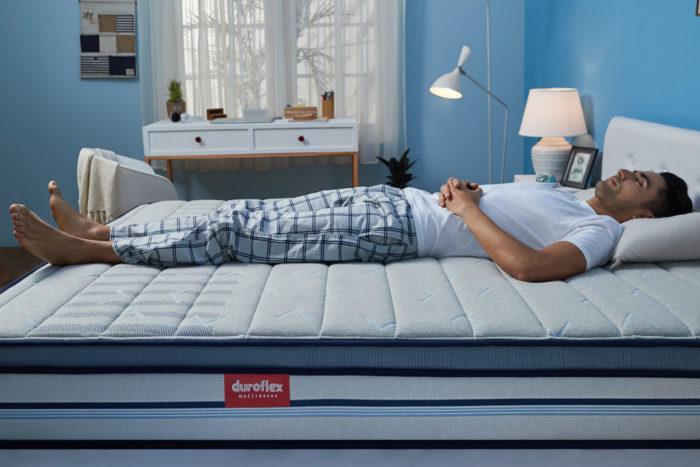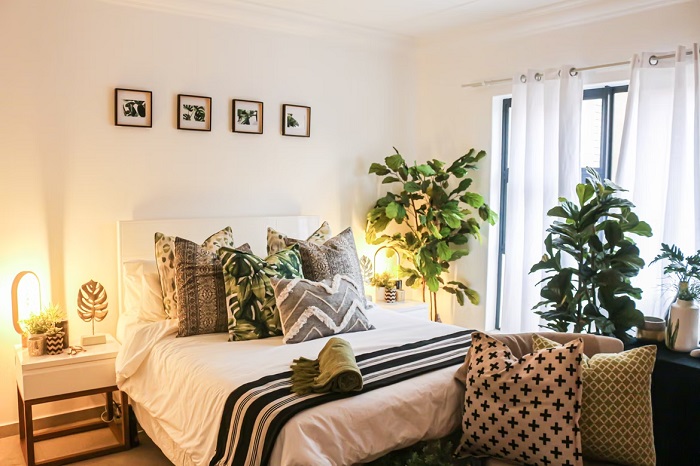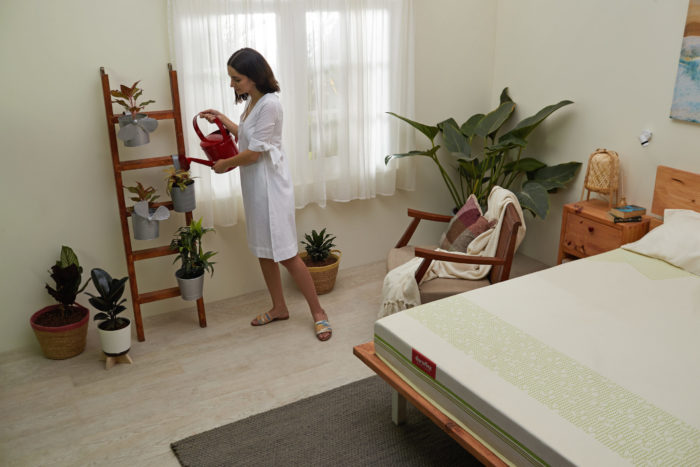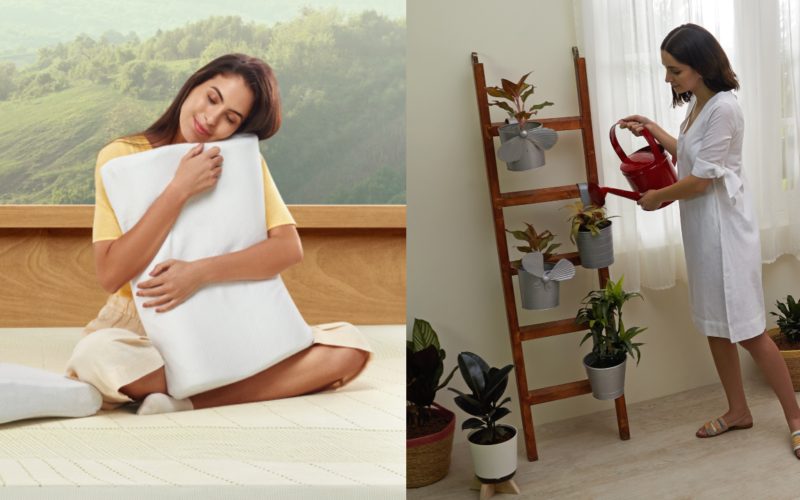“You need 6-8 hours of sleep every day.”
This is something that we have heard our parents say while growing up. Sadly, a lot of people take this for granted, especially in their late teens and 20s. It’s later in life that you begin to realise that how you function after a good, uninterrupted night’s sleep is very different from going about your day after getting bad quality sleep.

Why is sleep so necessary for us?
Studies have shown that sleep enhances brain function, gives us more energy throughout the day, our attention span lasts longer, and keeps the body healthy overall. On the other hand, bad quality sleep can cause serious physical ailments like increased blood pressure, stress, impaired memory, heart attack, diabetes and much more.
Nowadays, people come up with many ways to make their bedrooms more relaxing and well, ‘sleepable’. From floral bedsheets to multiple pillows, scented candles to soft duvets – innumerable things are bought thinking they would provide good sleep. However, what we don’t realise is that we also need to make our surroundings more sustainable and not just pretty to look at.

And why is that? What good does sustainability do?
Sustainability helps protect our environment and preserves natural resources for future generations.
Here’s an example: Suppose you use plastic containers to store your food. Chances are that within 2-3 years, you’ll throw it away. You’re not just adding another non-biodegradable item for the environment to deal with, but while you were using the container, there were harmful chemicals emitting out of it. According to sources, one such chemical is Bisphenol A (BPA) which is an endocrine disruptor i.e. it affects our ability to reproduce.
This is just one of the many examples of how our everyday used items are harming the environment and our health. So we need to find alternatives that can be used for years, are biodegradable, and aren’t made using harmful chemicals.

Now that we’ve understood why it’s important to use sustainable items, here at 5 changes you can make within your sleep environment to make it more eco-friendly:
1. Sleeping on mattresses made with natural components.
Mattresses made out of natural substances leave a way lesser carbon footprint as compared to those made out of synthetic products – which release harmful toxins during their use and take a long time to decompose later. We spend almost one-third of the day sleeping, in close contact with a mattress so, no wonder, time and again people have revealed that a good mattress is a product that is definitely worth spending money on because it improves our quality of life substantially.
In case you’re looking for sustainable mattresses, always go for biodegradable and 100 % natural materials like latex, coir and natural cotton fabric so you can sleep the way nature intended. The Natural Living range by Duroflex is worth mentioning here.
2. Replace your synthetic or cotton-mix pillow covers, mattress toppers and bed linen with those made out of ethically sourced sustainable materials.

Materials like Natural Latex, Cotton, Tencel, Ethicot etc. will not shrink after one wash, will remain crisp, are breathable, and will last you many years. If you want to check out bed linen which is 100% cotton, anti-bacterial, and prevents bad odour, click here. Using sustainable bed linen and pillow covers will not only improve sleep quality but will bring you closer to nature. Generally, 20,000 litres of water is used to produce 1 kg of cotton – to make 1 king-size bedsheet, as it weighs around 1 kg. But Duroflex is saving 4,500 litres per bedsheet. Wondering how? By using 23% Ethicot, which is made of 100% pre-consumer cotton waste.
3. Place air-purifying indoor plants inside your bedroom instead of using scented candles and room fresheners.

Studies have shown that scented candles and room fresheners contain carcinogens including formaldehyde, acetaldehyde and polycyclic aromatic hydrocarbons. The candles also contain phthalates that have been linked to endocrine disruption. Having plants like philodendrons and pothos inside your room is air purifying and relaxing. Money plant, Monstera, Rubber plant, are some good choices.
4. Using LED light bulbs for your lamps in your room.
LED lights use up to 85% less energy, last up to 25-times longer and are cheaper than incandescent lights, reported New York Times. Want to take your sustainability efforts a notch higher? Embrace natural lighting by making sure your bedrooms are well lit, properly ventilated and get a dose of sunshine during the day.
5. Wearing comfortable cotton or linen sleepwear.
While sleepwear made out of polyester or spandex is in fashion right now and is cheaper, remember that they tend to wear out after a few washes. Opt for cotton T-shirts, pyjamas or nightsuits instead. They are breathable and don’t irritate the skin. They also turn softer and more comfortable with every wash!
In this age of information, being ignorant about sustainability is not an excuse but a choice. In such a time, making small changes in our bedrooms will not just ensure a night of good quality sleep but will also contribute towards protecting our environment.
Additionally, we will also feel good about taking efforts to reduce our carbon footprint.🌳 So, if you want to take a look at sustainable sleep accessories, click here.
Here’s to sleep made sustainable!👍




